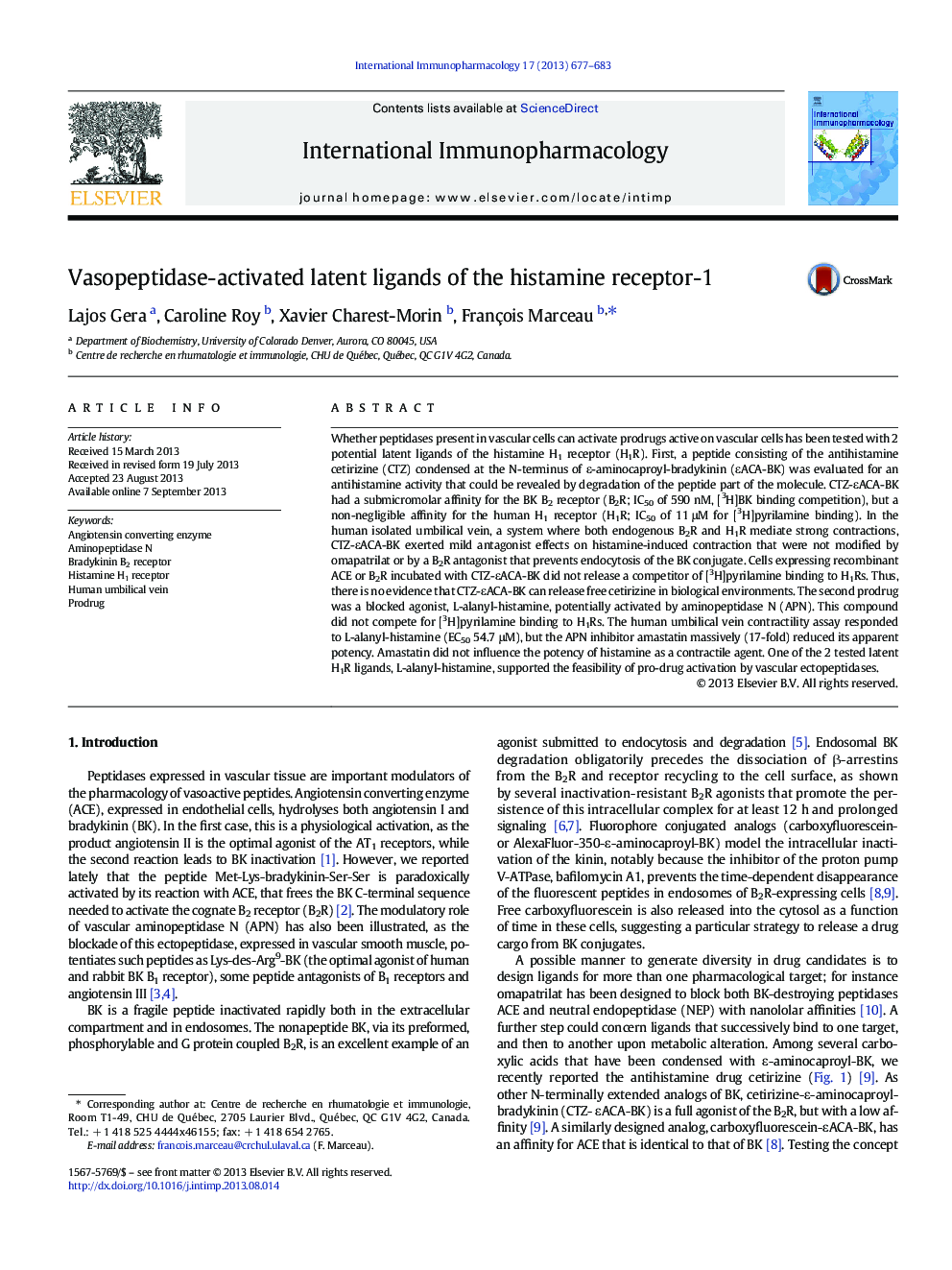| کد مقاله | کد نشریه | سال انتشار | مقاله انگلیسی | نسخه تمام متن |
|---|---|---|---|---|
| 5833140 | 1122618 | 2013 | 7 صفحه PDF | دانلود رایگان |
- We tested whether vascular peptidases can activate prodrugs binding to H1 receptors
- Cetirizine-ε-aminocaproyl-bradykinin is an agonist of the bradykinin B2 receptor
- It is a weak antagonist of H1 receptors not activated by peptidases
- L-Alanyl-histamine was designed as a latent H1 receptor agonist
- It is activated by vascular aminopeptidase N
Whether peptidases present in vascular cells can activate prodrugs active on vascular cells has been tested with 2 potential latent ligands of the histamine H1 receptor (H1R). First, a peptide consisting of the antihistamine cetirizine (CTZ) condensed at the N-terminus of ε-aminocaproyl-bradykinin (εACA-BK) was evaluated for an antihistamine activity that could be revealed by degradation of the peptide part of the molecule. CTZ-εACA-BK had a submicromolar affinity for the BK B2 receptor (B2R; IC50 of 590 nM, [3H]BK binding competition), but a non-negligible affinity for the human H1 receptor (H1R; IC50 of 11 μM for [3H]pyrilamine binding). In the human isolated umbilical vein, a system where both endogenous B2R and H1R mediate strong contractions, CTZ-εACA-BK exerted mild antagonist effects on histamine-induced contraction that were not modified by omapatrilat or by a B2R antagonist that prevents endocytosis of the BK conjugate. Cells expressing recombinant ACE or B2R incubated with CTZ-εACA-BK did not release a competitor of [3H]pyrilamine binding to H1Rs. Thus, there is no evidence that CTZ-εACA-BK can release free cetirizine in biological environments. The second prodrug was a blocked agonist, L-alanyl-histamine, potentially activated by aminopeptidase N (APN). This compound did not compete for [3H]pyrilamine binding to H1Rs. The human umbilical vein contractility assay responded to L-alanyl-histamine (EC50 54.7 μM), but the APN inhibitor amastatin massively (17-fold) reduced its apparent potency. Amastatin did not influence the potency of histamine as a contractile agent. One of the 2 tested latent H1R ligands, L-alanyl-histamine, supported the feasibility of pro-drug activation by vascular ectopeptidases.
Journal: International Immunopharmacology - Volume 17, Issue 3, November 2013, Pages 677-683
